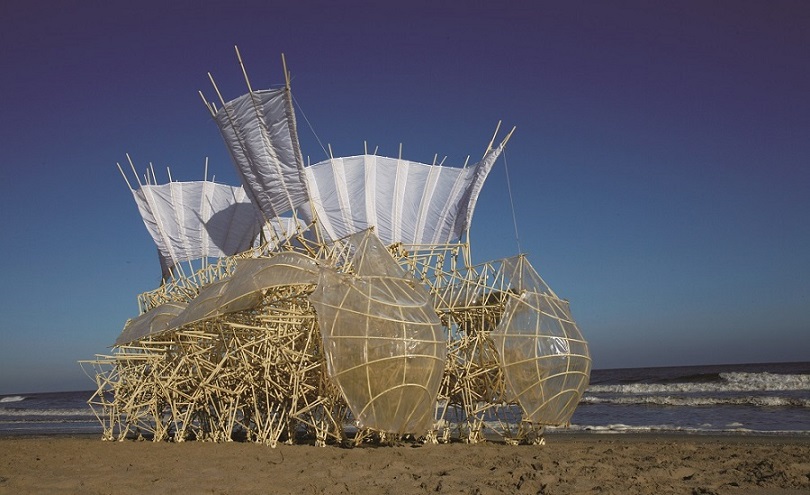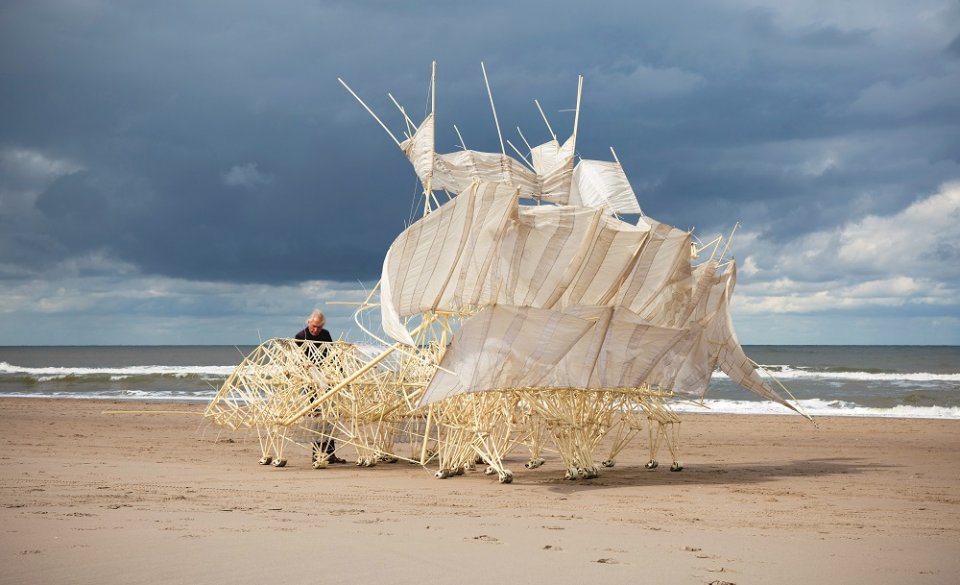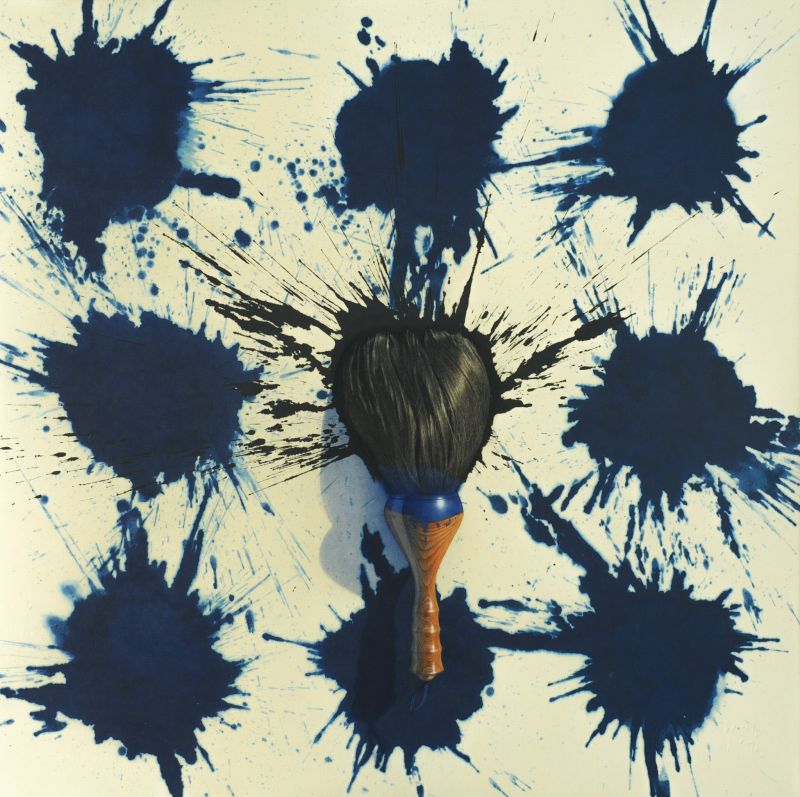They are large, gentle, and born to move gracefully with the wind across sandy landscapes in the Netherlands. They’re also made of wood and plastic tubing. The gentle giants in question aren’t really creatures at all—but the world-famous works of Dutch sculptor Theo Jansen, that go by the name Strandbeest, or “beach animal” in Dutch.
It takes a while to wrap your head around, but Jansen’s prized Strandbeests are completely non-living. In 1990, the artist created his first Strandbeest—a magnificent mechanism of PVC and wood that, when propelled by the wind, was able to move on its own. It set off a 28-year journey developing and perfecting an entire “breed” of these kinetic creatures; with the assurance of a proud creator he describes them as “a new species on Earth”.
And now for the first time, Theo Jansen’s Strandbeests will be journeying to Southeast Asia for a walk on our side of the world.
From Jun 23-Sep 30, the ArtScience Museum will feature 13 original, large-scale Strandbeests in a new exhibition Wind Walkers: Theo Jansen’s Strandbeests. Visitors will get to witness Jansen’s most recent Strandbeests to “fossils” of past beests, and even walk alongside the creatures in the galleries. Of the featured is the Animaris Siamesis, which at 10 meters long and 240kg is the largest Strandbeest in the exhibition.

Animaris Siamesis
Like his inventions, the 70-year-old artist is an enigma. You could call him a modern-day Da Vinci; Jansen was trained as a physicist before becoming a painter, and then moving on to the artistic medium of sculpting. His very first invention was a controversial flying saucer made of cheap PVC pipes that he launched in 1980; this he followed up with a bigger-scale painting machine. Combining his skillset in both art and science, the Strandbeests, then, were originally intended as a solution to flooding—wherein the creatures would roam beaches dutifully, pushing and piling sand to form natural barriers on the shores.
Today they exist purely as the portfolio of a visionary; an otherworldly creation blurring the lines between art, science, engineering and performance. They’ve evolved from their first designs, now able to travel deftly over sand, survive storms, detect and avoid water, and store air pressure so as to continue moving even in the absence of wind.

Theo Jansen with Plaudens Vela
Jansen has previously said that eventually he wants “to put these animals out in herds on the beaches, so they will live their own lives.” For all his genius, that day may come soon—though first he’ll have to wait till they’re back from tour.
Wind Walkers: Theo Jansen’s Strandbeests will run from Jun 23-Sep 30 at the ArtScience Museum. Tickets will be released soon here.





